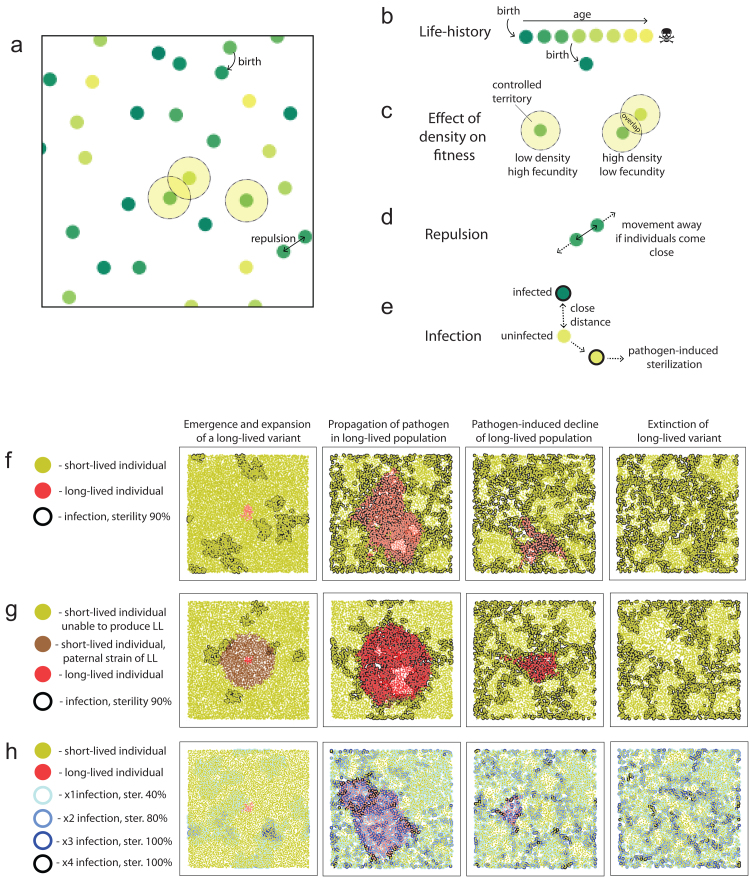Fig. 4.
Pathogen control hypothesis: the model of selection. a) The spatially distributed agent-based model implies free movements of individuals (depicted as circles). b) Individuals die when reaching a critical age defined by the intrinsic strain-specific parameter: lifespan setpoint. Age in (a)-(e) is depicted with color. c) Higher density results in the overlapping territories of the individuals, thus reducing the available resources and decreasing the host’s fecundity. d) To maximize their available territories, the individuals are moving away from each other (see Video 1, Online Resource 2). e) The individuals may infect each other; the infection probability depends on the distance between individuals. f) The principal stages of stabilizing selection prevent the emergence of long-lived variants in the population. Colors correspond to the strains in (f) and (g). Sterilization by pathogen – 90%. g) The reasons for the absence of long-lived mutants in nature and the advantage of evolvability suppressors. In the initial stage of long-lived variant propagation, its paternal short-lived strain (brown) becomes displaced. Thus, not only long life per se but even the ability to produce a long-lived mutant is detrimental. h) Scenario of selection with several milder pathogens. Four pathogens, 40% sterilization.

